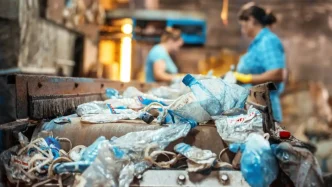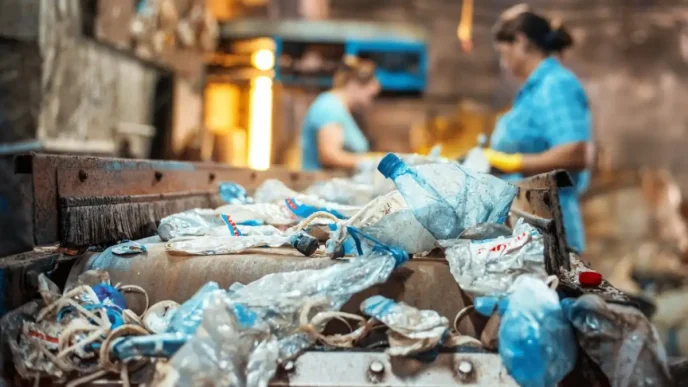In a stride towards sustainable tourism, solar-powered electric ferries have begun gliding along the iconic Singapore River, with the first two of ten Pyxis R ferries launched on 17 March. Manufactured by local maritime start-up Pyxis, these vessels mark a significant shift for river cruise operator WaterB, which plans to replace half of its 20-boat fleet with these eco-friendly alternatives by the end of 2025. This initiative not only promises a quieter, smoother ride for passengers but also positions Singapore as a leader in integrating clean energy into urban transport.
The launch event, held at the ArtScience Museum, saw Senior Parliamentary Secretary for Transport Baey Yam Keng commend the project as a fusion of tradition and innovation. He highlighted the ferries’ vehicle-to-grid technology—a system allowing excess renewable energy to be returned to Singapore’s electricity grid—as a step towards a more resilient and efficient ecosystem. “This vessel is a testament to our maritime sector’s ability to blend tradition with cutting-edge technology, demonstrating that clean energy solutions can be both functional and commercially viable,” Baey remarked at the event.
A Floating Solar Farm on the Singapore River
The Pyxis R ferries, each equipped with solar panels capable of generating around 22 kilowatt-hours (kWh) of electricity daily, offer a glimpse into the future of urban mobility. According to Pyxis founder and chief executive Tommy Phun, the combined energy output from ten ferries could power the equivalent of 20 HDB flats for a day. Given that river boats often operate in the evenings and at night, the vessels can harvest solar energy during idle afternoon hours, reducing reliance on the national grid.
Phun’s vision extends beyond mere transportation. With vehicle-to-grid capabilities, the ferries could act as a “floating solar farm” on sunny afternoons, potentially powering micro-waterfront projects such as events on floating piers. While infrastructure for maritime vehicle-to-grid charging is not yet widely available, a landmark agreement signed on 17 March between Pyxis Maritime, SP Mobility (a subsidiary of utilities company SP Group), The Mobility House Asia Pacific, and WaterB aims to test solutions for this innovative model in Singapore.
Each ferry consumes power equivalent to running just three to four hairdryers, Phun explained, underscoring the efficiency of the electric vessels. For WaterB, the transition to solar-powered boats is not just an environmental win but also a financial one. Director Darren Tan estimates that the energy generated by the ferries—capable of covering at least 50% of daily operations even on rainy days—will slash long-term operating costs by 30 to 40%.
Enhancing the Passenger Experience
Beyond the environmental and economic benefits, the Pyxis R ferries promise a more enjoyable experience for tourists and locals alike. The 48-seater vessels, which operate between Clarke Quay, Boat Quay, and Marina Bay, produce less noise and offer greater stability on the water compared to traditional boats. “The ride will be more pleasant for passengers,” Tan noted, aligning the upgrade with WaterB’s commitment to sustainable tourism.
Passengers can book a cruise on the Pyxis R ferries through WaterB’s website or at its ticketing kiosks, with fares set at S$28 for adults and S$18 for children. While Tan does not anticipate a significant increase in passenger numbers in the near future—WaterB currently runs 60 to 80 trips daily—the introduction of these ferries reflects a growing demand for eco-conscious travel options in a city known for its forward-thinking urban policies.
A Broader Vision for Green Maritime Solutions
The Pyxis R ferries are not the company’s first foray into electric maritime transport. In March 2024, Pyxis launched a series of electric workboats to ferry workers between Marina South Pier and nearby anchorages, demonstrating its commitment to decarbonising Singapore’s waterways. The latest project builds on this foundation, with the remaining eight solar-powered ferries slated for delivery almost every other month throughout 2025.
The broader implications of this initiative resonate with Singapore’s ambitious sustainability goals. As a densely populated city-state with limited land for large-scale solar farms, harnessing renewable energy through innovative solutions like floating solar panels on ferries offers a practical way to reduce carbon emissions. If successful, the vehicle-to-grid model could inspire similar projects in other sectors, from public transport to logistics, further embedding clean energy into the fabric of urban life.
Challenges and Opportunities Ahead
While the rollout of the Pyxis R ferries is a promising step, challenges remain. The lack of existing infrastructure for vehicle-to-grid charging in the maritime sector means that the full potential of these vessels—such as powering waterfront events—cannot yet be realised. However, the agreement signed on 17 March signals a collaborative effort to overcome these hurdles, with stakeholders committed to piloting solutions tailored to Singapore’s unique context.
Moreover, the scalability of this model depends on factors such as weather reliability and the cost of maintaining solar-powered systems in a tropical climate prone to heavy rainfall. Even so, WaterB’s ability to power half of its operations with solar energy on less sunny days suggests that the technology is robust enough to withstand such challenges, at least for now.
Public reception will also play a critical role in determining the long-term success of the Pyxis R ferries. While the quieter, smoother rides are likely to appeal to passengers, raising awareness about the environmental benefits of choosing sustainable transport options will be key to fostering a culture of green tourism. Initiatives like these could set a precedent for other cities in South East Asia, where urban waterways are often central to tourism and daily commuting.
Singapore’s Green Future on the Water
The introduction of solar-powered ferries on the Singapore River encapsulates a broader trend towards sustainability in one of Asia’s most dynamic cities. It reflects a growing recognition that even small-scale innovations—such as replacing diesel-powered boats with electric ones—can contribute meaningfully to global efforts to combat climate change. For Pyxis and WaterB, this project is not just about transforming river cruises but also about reimagining how renewable energy can be integrated into everyday infrastructure.
As the remaining Pyxis R ferries join the fleet over the coming months, their impact will extend beyond the Singapore River, potentially inspiring other maritime hubs to adopt similar technologies. For now, passengers cruising past the glittering skyline of Marina Bay can take pride in being part of a quieter, greener journey—one that signals a hopeful future for sustainable travel in South East Asia.














